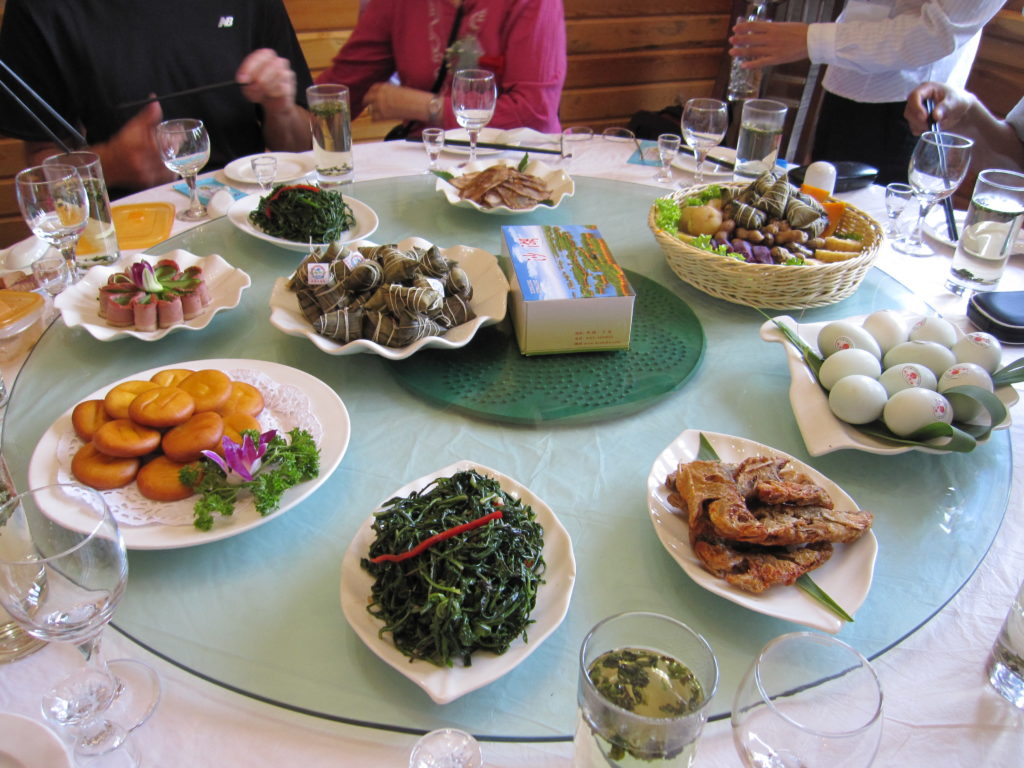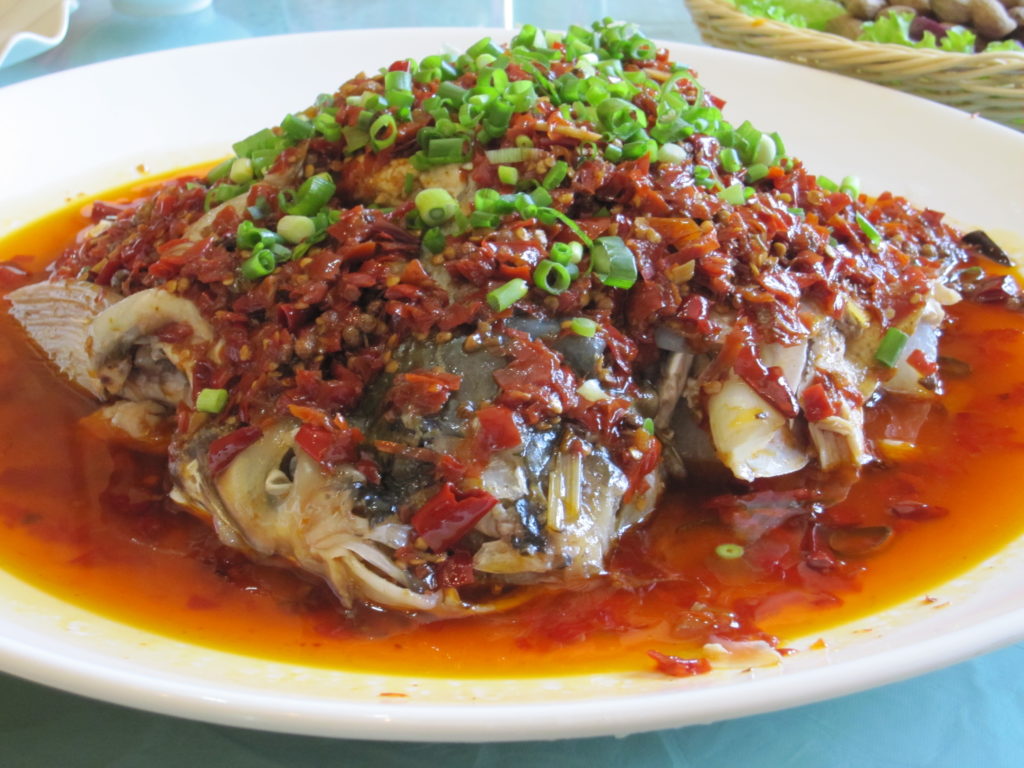The most basic staple of life besides sleep and breathing is food. Food is something we all need to survive, but it can be so much more than that – food can be an experience, whether of joy, closeness, and excitement – or trepidation, shock, and surprise. In my posts about grocery shopping I expressed some of the challenges of buying food when you don’t speak the language. However, I must say that I immensely enjoyed eating out while I was in China. Eating in China is primarily a social activity; meals are shared, and the experience becomes richer in the company of others. I have many fond memories of eating with people in China.

Eating family style is very common in China, with the dishes placed on a lazy Susan in the middle and everyone snagging what they like as it is rotated.
There’s a lot to get used to when you first eat out in China. The key thing to remember about utensils is that chopsticks are the tool of choice. If you get soup, you’ll get a spoon, and sometimes there are serving utensils for dishes – but often you just serve yourself from a main dish using your chopsticks. Thankfully I learned to use chopsticks before I went to China (thanks Dad!) so I was able to eat fairly competently.
The Chinese people that I had the pleasure to eat with were very hospitable and generous. They would encourage me (and each other) to “Chi, chi!” (Eat, eat!) at the start of and during every meal. It’s good manners to eat well as a guest, but you don’t want to finish everything on the table – it implies that the host didn’t provide enough.
I was surprised first thing by some of my students when they enthusiastically started heaping my bowl of rice with choice bits of this and that from the table. It’s a sign of being a good friend when you serve goodies directly into your friend’s bowl of rice. Usually I wasn’t able to finish all that was given to me, but I learned that if you eat veeeery sloooowly they won’t usually load up your bowl any more. Since as an American I was larger than the vast majority of the Chinese, most of my students thought that I could eat a lot – which I can’t. They were always surprised when I would eat only half of my bowl of rice – and they’d be on their second or third! In turn, I was frankly amazed at the amount of food they could pack away – where did it all go? It was always fun to watch them eat.
The composition and presentation of food is quite important in China. The way my Chinese friend described it was that each dish should have at least three colors, and that the contrast and brightness of color made the dishes more appealing. The shape of the plate for different dishes mattered as well. Sometimes the chef would add a lovely touch to the food to make it more impressive.
One experience I remember vividly was having a meal in the school cafeteria with one of my students. She was a real sweetheart from the northeast of China, and insisted on buying me her favorite dish and carrying it to the table for me. When it arrived, I saw that it was some sort of reddish soup. “What is it called?” I asked her. “Malatang,” she replied. Excited to eat a food she was so enthusiastic about, I scooped up a big spoonful and downed it in one bite. Seconds later I thought my mouth was going to be burned away. Two big tears welled up uncontrollably in my eyes. “Do you like it?” she asked me anxiously. “…It’s delicious,” I croaked. She smiled. I smiled. My mouth burned. I later learned that the soup had a lot of lajiao, or spicy pepper, in it. I came to enjoy lajiao – but I won’t forget that first bite!
Although I ate food in China that I never would have thought of eating in America, it was often a good experience, and I valued the social time just as much as the eating – it was food for both the spirit and the body, and led to relationships that I wouldn’t give up for anything. I encourage you to branch out and try some new ethnic foods, whether Chinese or something else! While you may be initially taken aback, you’re sure to find something exciting and enjoyable.
Just beware of lajiao.

